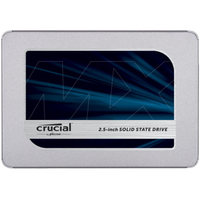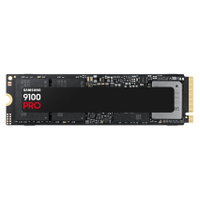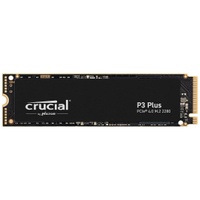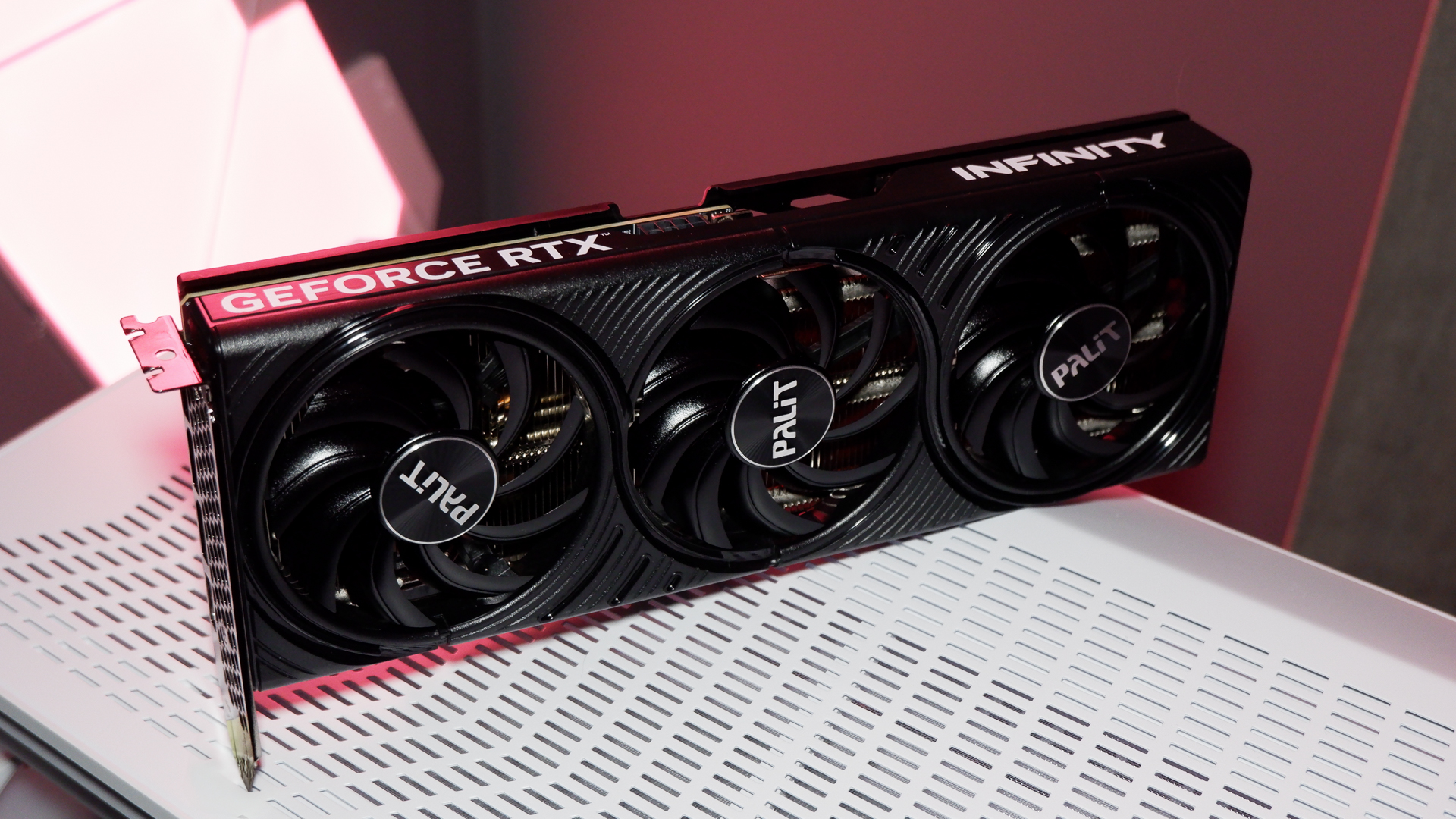Best SSD for gaming in 2025: the speediest SSDs I personally recommend
Give your gaming PC a serious speed boost with the best SSD for gaming.
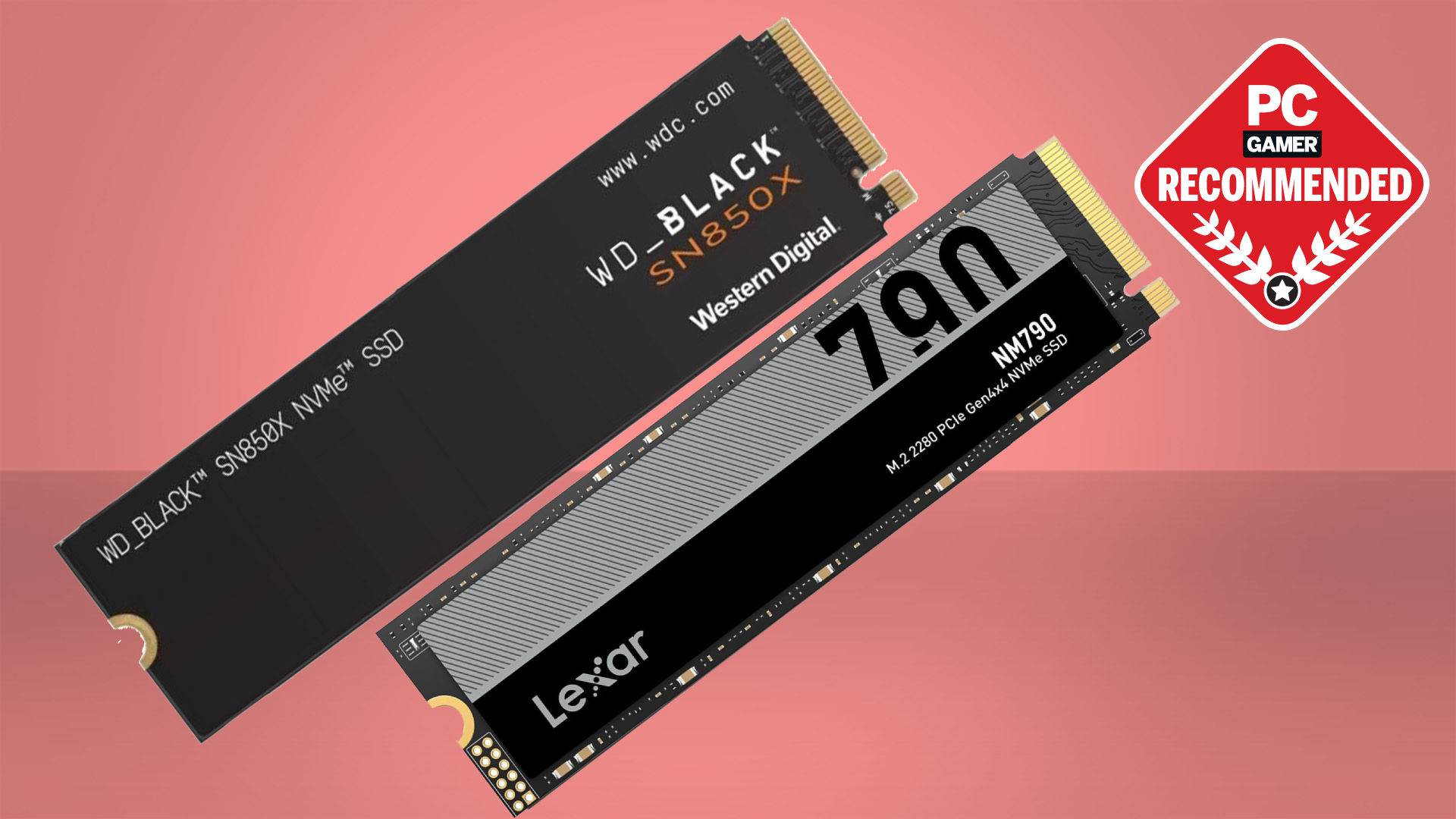
When it comes to your games and most PC tasks, a fast solid state drive makes an absolute world of difference. Compared to a conventional HDD, buying one of the best SSDs for gaming means your load times will become trivial, you'll be much less prone to stutter, and your PC gaming experience becomes much smoother, serene and speedy. A good SSD gets you straight to the action, and that's right where any PC gamer wants to be.
The best SSD for gaming on the market is currently the WD Black SN850X. It's got a great blend of performance and affordability that's perfect for PC gaming. However, when it comes to affordability I'm a big fan of the supremely good-value and lightning-fast Lexar NM790, which is my current top recommendation for the best budget gaming SSD.
We conduct extensive testing to pick out the top SSDs. A 512 GB drive may seem tempting for the money, but might not be worth it given the size of gaming installs, so 1 TB to 2 TB is likely where you'll want to aim. We currently recommend Gen 4 drives over Gen 5, as there's little real-world advantage over the latest versions—but if you absolutely must have the fastest thing going, I've been impressed by the Team Group T-Force Z540.

Jeremy likes CPUs. And GPUs. And SSDs. A lot. Which is just as well, since he's been writing about them since the early Mesozoic period. Or at least since Intel released those early stuttering SSDs. Remember them? Good times.
Recent updates
Update 11 April 2025 to add the Samsung 9100 Pro to the Also Tested section. It's a mighty fine Gen 5 drive but it's significantly more expensive than our current pick for the best PCIe 5 SSD, it's not enough to cut the mustard and make it a recommendation. We've also gone through all our other picks to ensure they're still the best ones in each category.
Updated 26 February 2025 to add in the 8 TB version of the WD Black SN850X as the best 8TB SSD. All other recommendations were checked, and remain the best picks you can buy today.
The quick list

Best overall
The WD Black SN850X is a fantastic all-rounder when it comes to gaming SSDs, and even though it's been around for a while it's still the best overall NVMe drive out there right now.

Best budget
The Lexar NM790 is a great performing Gen 4 SSD from a respected manufacturer that costs a lot less than you might expect, while making very few real-world compromises.
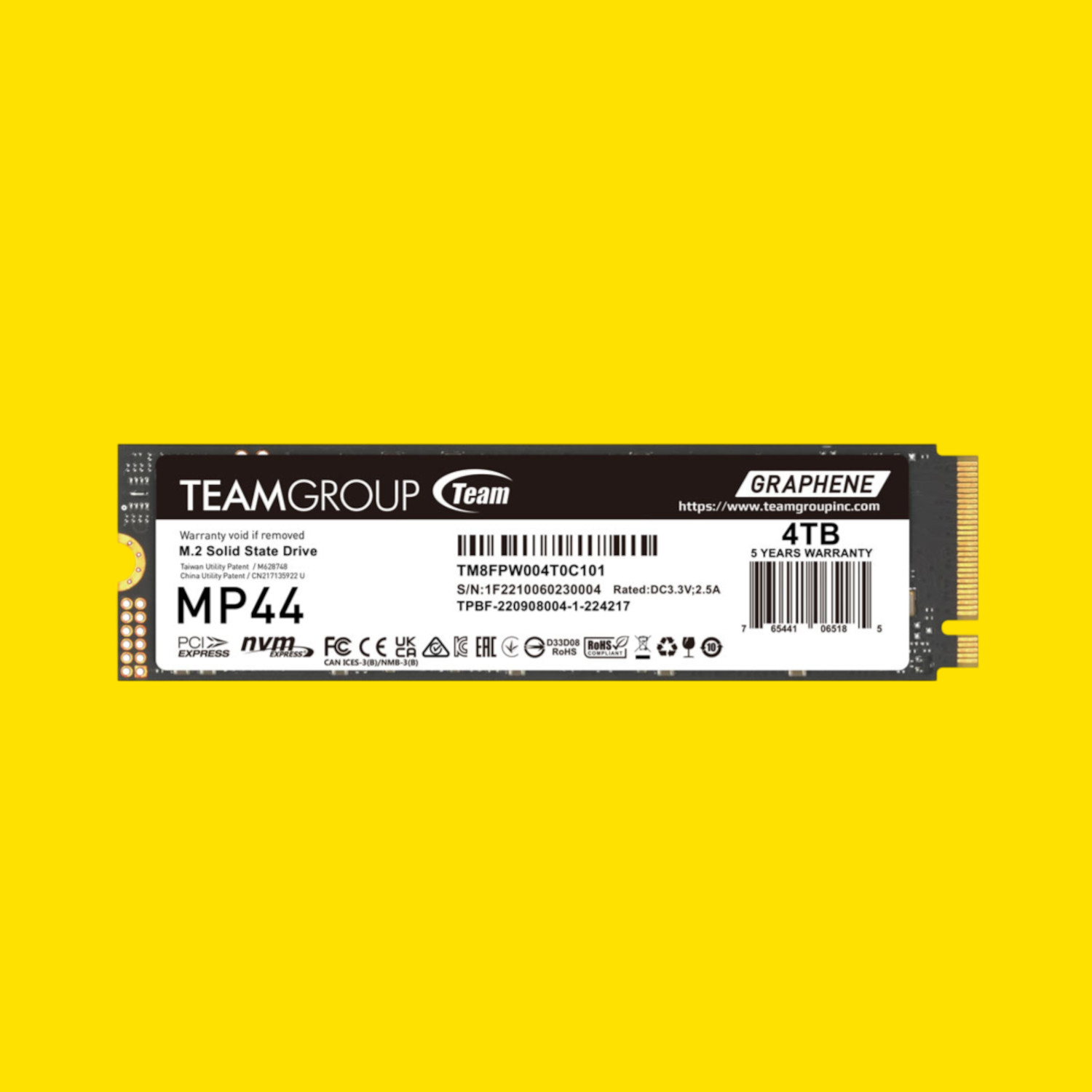
Best 4 TB
If you want masses of high-speed NVMe storage for a not-so-massive price, then Team Group's MP44 is the obvious choice. It's very similar to the NM790 and there's nothing wrong with that.

Best 8 TB
The best SSD for gaming has also been released in 8 TB configuration, many moons after the smaller drive. It's an ultra-sized (and ultra-priced) single drive, but it's more of a storage monster than a speed demon for gaming.

Best 2230 SSD
Need more storage in your Steam Deck, Asus ROG Ally etc? Well, this 1 TB 2230 from Lexar is the one to get. Fast, cool, and great value for money. Shame there isn't a bigger version at the moment.

Best for PS5
The latest Phison controller in combination with some high-performance NAND flash memory makes the Silicon Power XS70 an extremely fast drive for Sony's PlayStation 5.
⬇️ Click to load more of the best SSDs ⬇️
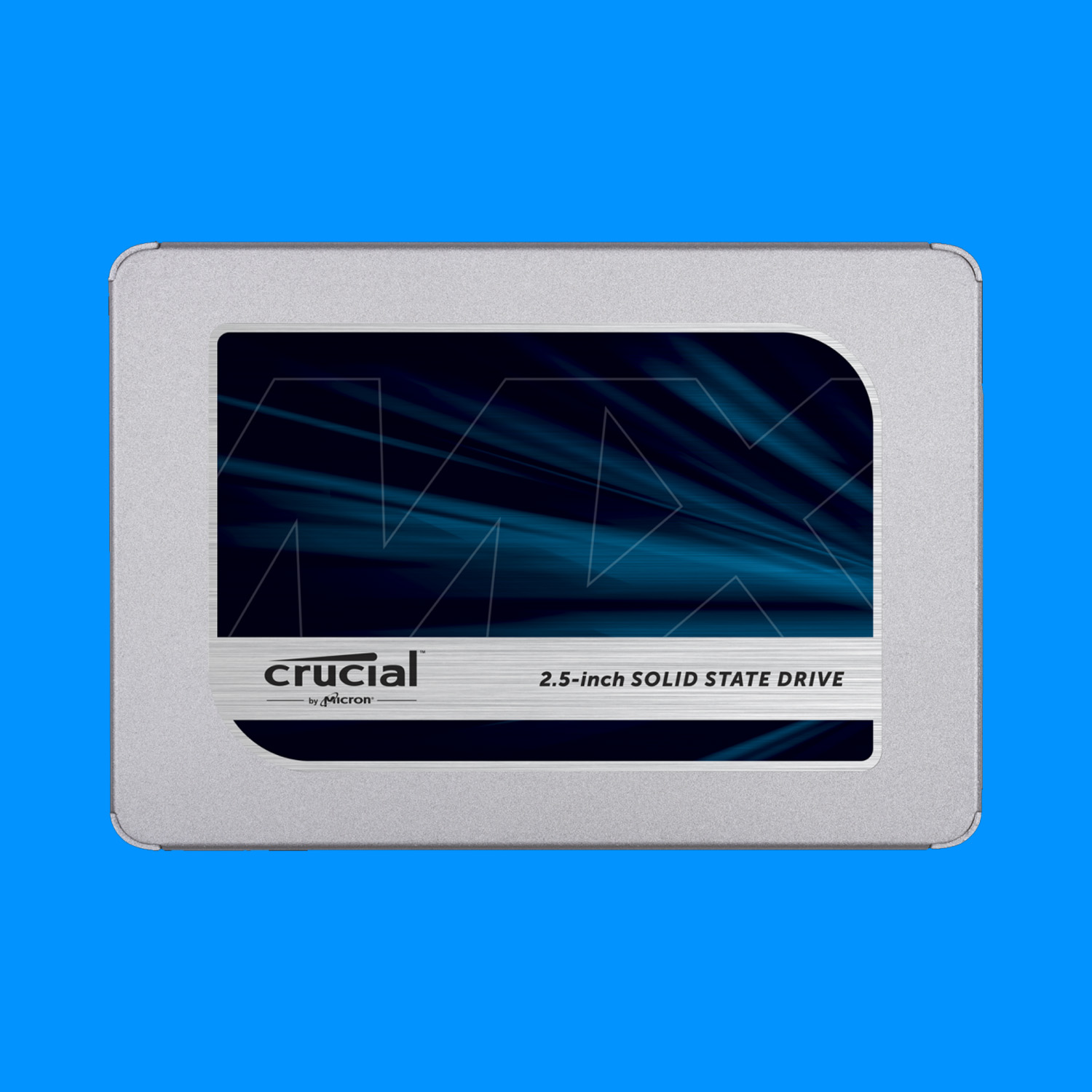
The best SATA
If you can't fit an NVMe SSD inside your PC, or you've too many already, then a SATA drive is still a solid option for speedy, non-essential storage. This Crucial is still a lot quicker than any hard drive, that's for certain.

Best PCIe 5 SSD
If you really must have the fastest SSD possible in your gaming PC, then don't spend any more than you need to. The T-Force Z540 is the best Gen 5 SSD because it's super fast but not super expensive.
The best gaming SSD


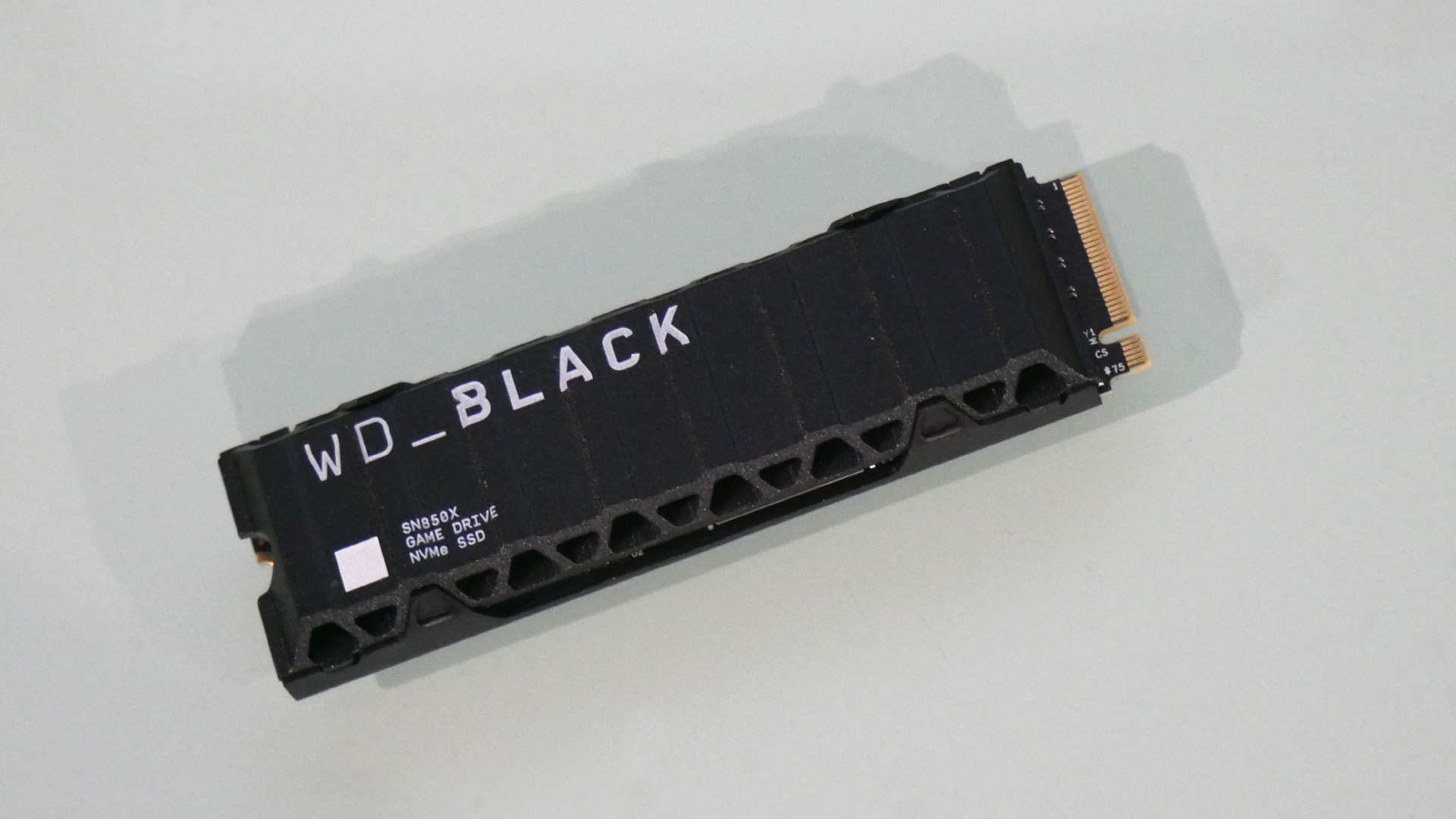
Specifications
Reasons to buy
Reasons to avoid
Our favorite WD Black SN850X config:
WD_Black SN850X | 2 TB | 7300 MB/s read | 6600 MB/s write
This drive comes in various capacities, but I particularly like the 2 TB flavour here. Still, no matter which one you go for, this is a fantastic all-round gaming SSD and tops our recommendations for a very good reason.
✅ If you want a great all-rounder: The SN850X has a winning combination of great speeds, cool running and affordability that's difficult to beat.
✅ If you don't want to worry about temps: Whether you go for the heatsink model or not, the WD Black SN850X stays chilled out.
❌ You want absolute cutting-edge performance: There are slightly faster drives, or much faster if you go for Gen 5, but realistically this is all the real-world speed you're going to need for the time being.
The best SSD for gaming is currently the WD Black SN850X, and while it might have been on this list for a while, it's still the one I'd pick for the best combination of all the things you might want from a gaming solid state drive.
PCIe 5.0 is an important feature on AMD and Intel's latest platforms, but Gen 5 drives run hot, cost a pretty penny, and no games benefit from the extra speed yet. The WD Black SN850X might be something of a last hurrah for Gen 4 SSDs, but it's still the best one out there for an overall balance of cost, speed and efficiency.
The 1 TB model we reviewed is the entry-level option, which makes sense given the size of modern game installs. However, in late 2024 there was a new addition to the lineup: an 8 TB option, which we've added in as the best 8 TB SSD for gaming, too.
WD’s in-house controller chip, provided by compatriot SanDisk, has been revised, and we found that this—in addition to some higher-density NAND—means that the WD Black SN850X truly flies.
This WD drive makes use of the latest 2.0 version of the company's Game Mode drive management software. WD claims it improves game loading times courtesy of a so-called "read look-ahead" algorithm, which predictively caches game data. It now runs automatically, detecting when games are loaded. How much that kind of feature actually makes a difference in the real world is difficult to pin down.
What I do know is that, as a gaming drive, it puts on an excellent showing. With read speeds of 7,300 MB/s and 6,300 MB/s writes for the 1 TB model (6,600 MB/s for the others), it's a real performer and it stays cool, calm and collected while it does it.
We tested a version with WD's armour-style cooler, but in all honesty, it doesn't need one. It runs cool regardless of the heatsink, and even cooler than the WD Black SN850 that came before it. The old SN850 hit a rather toasty 77°C, whereas this new drive hits just 58°C under sustained load, which is quite an improvement.
The 4K random access results were maybe a little bit disappointing, showing little to no improvement over the previous drive. But other than that, this is a fantastic all-round drive and improves on its predecessor enough that we think it deserves to sit at the tippy-top of this list for the best gaming SSD. Fast gaming speeds, cool running, great pricing, and a software suite that finishes off a very attractive package—whether you go for that aggressive heatsink or not.
Read our full WD Black SN850X SSD review.
The best budget gaming SSD


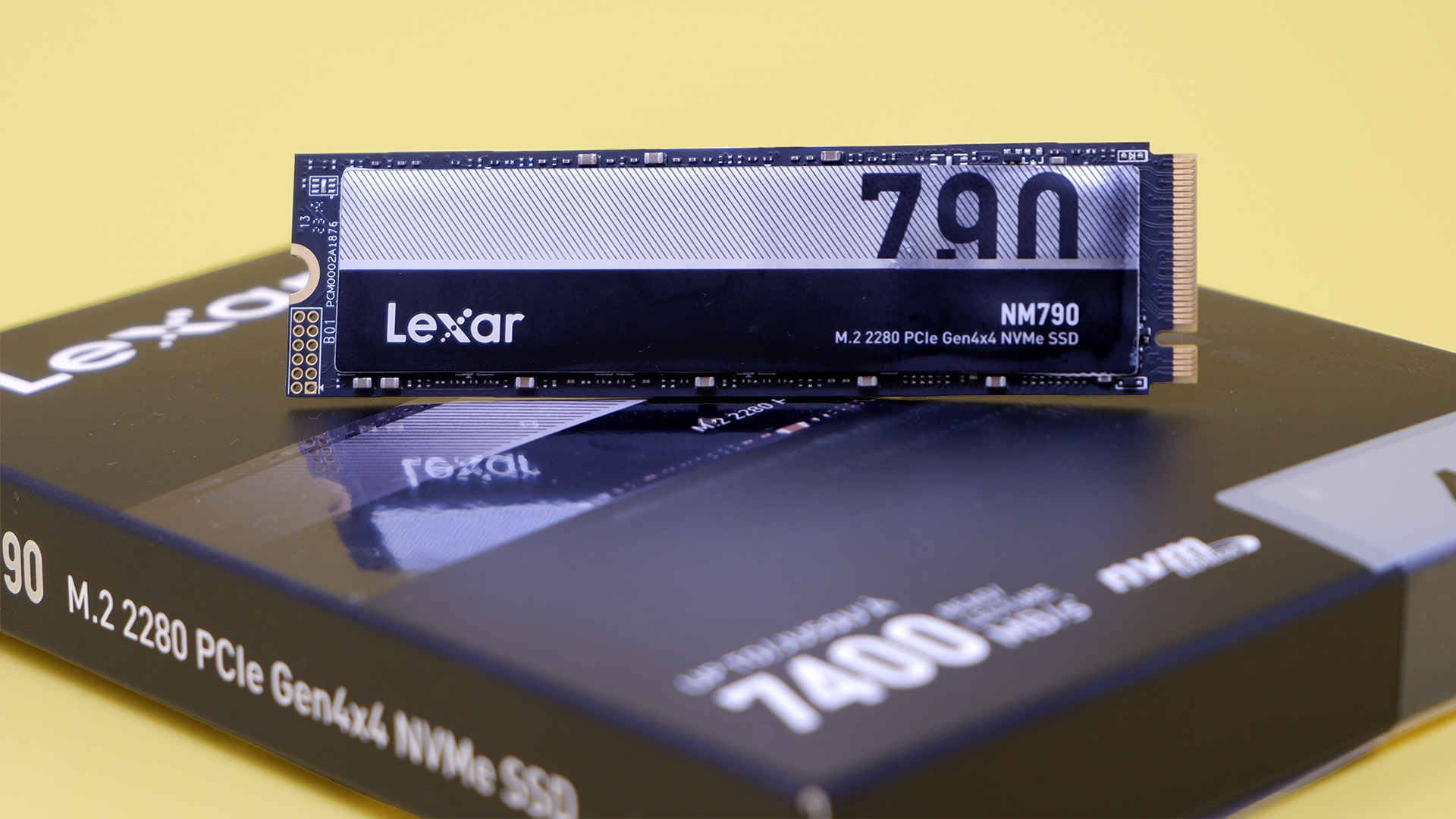
Specifications
Reasons to buy
Reasons to avoid
Our favorite Lexar NM790 config:
Lexar NM790 | 1 TB | 7400 MB/s read | 6500 MB/s write
If you're looking for super-fast speeds without a super-high price, the Lexar NM790 has several tricks up its sleeves to make all that not just possible, but advisable too. It's fast, cool and reliable, and makes for a fantastic gaming drive.
✅ If you want top-end performance for less: The Lexar NM790 is damn near as fast as the top Gen 4 performers, but regularly comes in significantly cheaper
✅ If you don't want a heatsink: We tested the heatsink-less model and found its thermal performance to be great, making it a very good laptop or small form factor solution.
❌ You'd prefer some more known components: The controller and flash combination here is a bit of an anomaly, but we've had no problem with the drives we tested and are still using long term. Still, if cheaper components bother you, you might want to look elsewhere.
NVMe drives, especially some of the faster ones, used to be a bit of an expensive proposition. But thanks to some clever usage of components you might not be as familiar with, it's now possible to buy a really, really fast drive for less than you might expect. Enter, the Lexar NM790, an SSD that delivers as much meaningful performance as you could want while still remaining affordable. That makes it the best budget gaming SSD we've tested, and if you read on, I'll tell you exactly why.
While other gaming SSDs make use of known entities like the Phison E18 for a controller chip, the Lexar instead uses a lesser-known model, the MaxioTech MAP1602A, alongside some YMTC 232-layer TLC memory. If those sorts of unfamiliar names make you nervous, there's no need to worry. These components might make the drive cheaper overall, but when it comes to performance, they've really got the gaming goods.
Sequential read and write times? 7,400 MB/s and 6,500 MB/s respectively, putting the Lexar NM790 up there with some of the very fastest Gen 4 drives we've tested. With a 3,000 TBW rated endurance there's very little to worry about reliability-wise either, especially as the Lexar likes to run relatively cool.
We tested the heatsink-less 4 TB model and found that under moderate load, copying a 30 GB test folder, the Lexar managed a peak temperature of 57°C. That's surprisingly chilled out for such a fast drive with no heatsink, although if you're the sort of person that likes to wear braces with your belt just in case, a heatsink-equipped version is available for a little bit more, although in all honesty, it's not necessary to make sure the NM790 delivers its maximum performance.
In real-world usage, the NM790 makes use of some clever SLC caching to reach its top speeds with a large cache buffer, and we found this solution delivered excellent performance. While it is possible to push this system to its limits and find the cracks, if you're going to be gaming on this drive—and let's face it, that's probably why you're here—be rest assured that its gaming performance is superb.
You can even find one on discount fairly often if you're prepared to keep an eye on our cheap gaming SSD page, which of course we highly recommend. Still, even at full price this drive is a stormer for less, and easily our top pick for the best budget gaming SSD. Simple as that, folks. Simple as that.
Read our full Lexar NM790 4 TB review.
The best 4 TB SSD for gaming
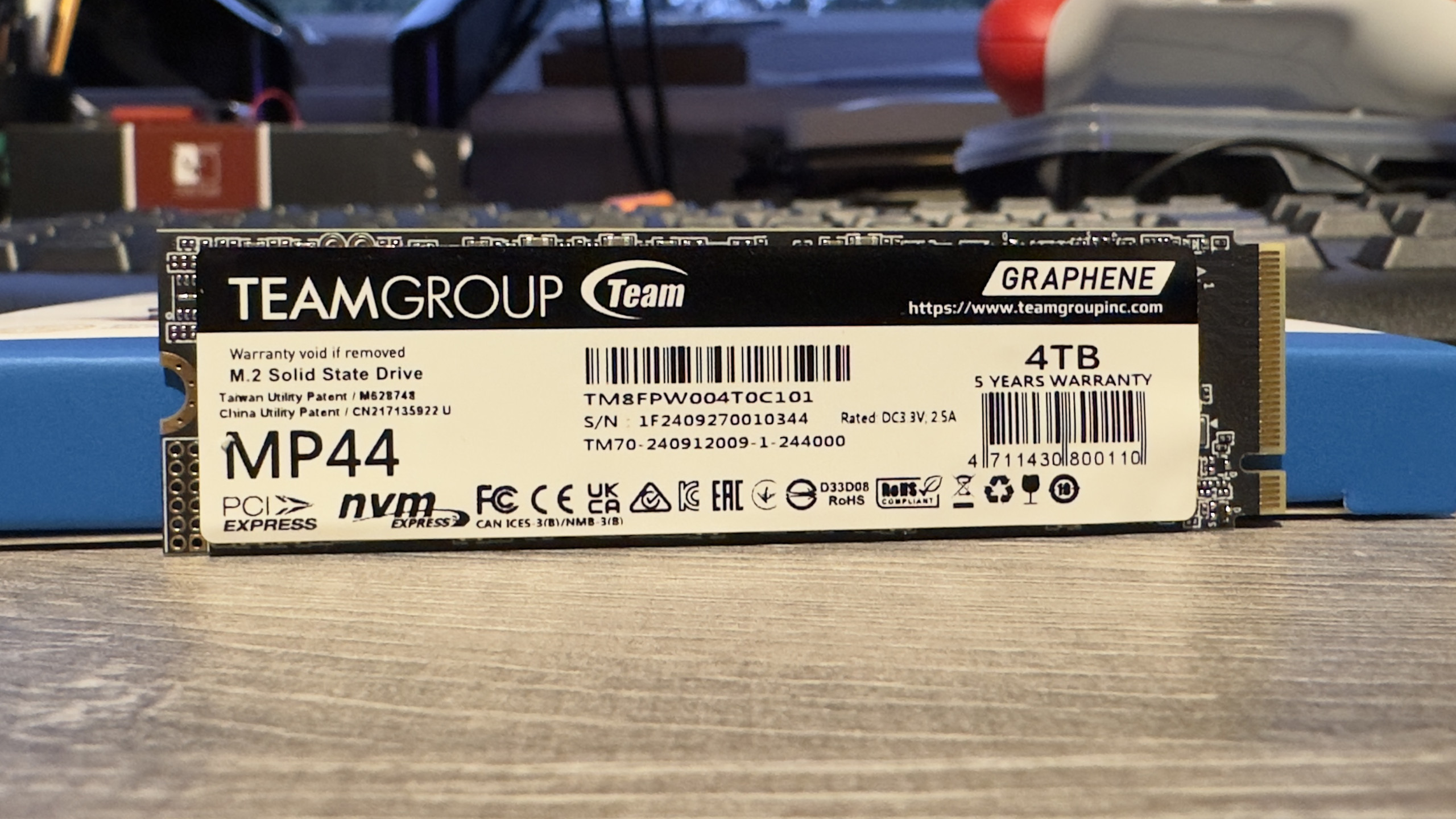




Specifications
Reasons to buy
Reasons to avoid
Team Group MP44 | 4 TB | NVMe | PCIe 4.0 | 7400 MB/s read | 6900 MB/s write
Team Group has given this some mighty specs for the money, though it's actually the same hardware as in the Lexar NM790. The sequential read/write speeds are extremely high but it can only sustain them over short bursts. At this price, it's well worth putting up with that limitation.
✅ You want an SSD with masses of space: 4 TB is as big as it gets right now, unless you want to spend an equally huge amount of money.
❌ Your PC doesn't have great cooling: The low thermal limit means you really need to ensure that the MP44 is covered by a good heatsink with lots of air flowing over it, if you want to avoid performance throttling.
With game install sizes just getting bigger and bigger (120 GB+ isn't unusual at all), 1 TB drives just aren't big enough. Even 2 TB might be a bit slim if you're using it to host the operating system, apps, and games. Fortunately, 4 TB SSDs are really dropping in price and the best high capacity gaming SSD right now is the Team Group MP44.
It's important to first note that Team Group has multiple 'MP44' SSDs available, such as the MP44Q, MP44S, and so on. The one you want is just the plain ol' MP44 but thanks to sharing the same hardware as the fantastic Lexar NM790, there's nothing plain about its performance.
There are some differences, though. While the Team Group MP44 has a larger dynamic pseudo-SLC cache than the NM790 (which is used to keep write speed as high as possible), once the drive fills up a bit, the data transfer rate drops lower than it does on the Lexar SSD.
It also has a lower maximum operating temperature and while it doesn't run especially hot for such a speedy drive, you will want to make sure that the MP44 is kept cool under a motherboard M.2 heatsink to make sure it doesn't throttle performance.
If none of that is an issue and you just want a massive SSD for a not-massive price, then you really can't beat the Team Group MP44.
Read our full Team Group MP44 4 TB review.
The best 8 TB SSD


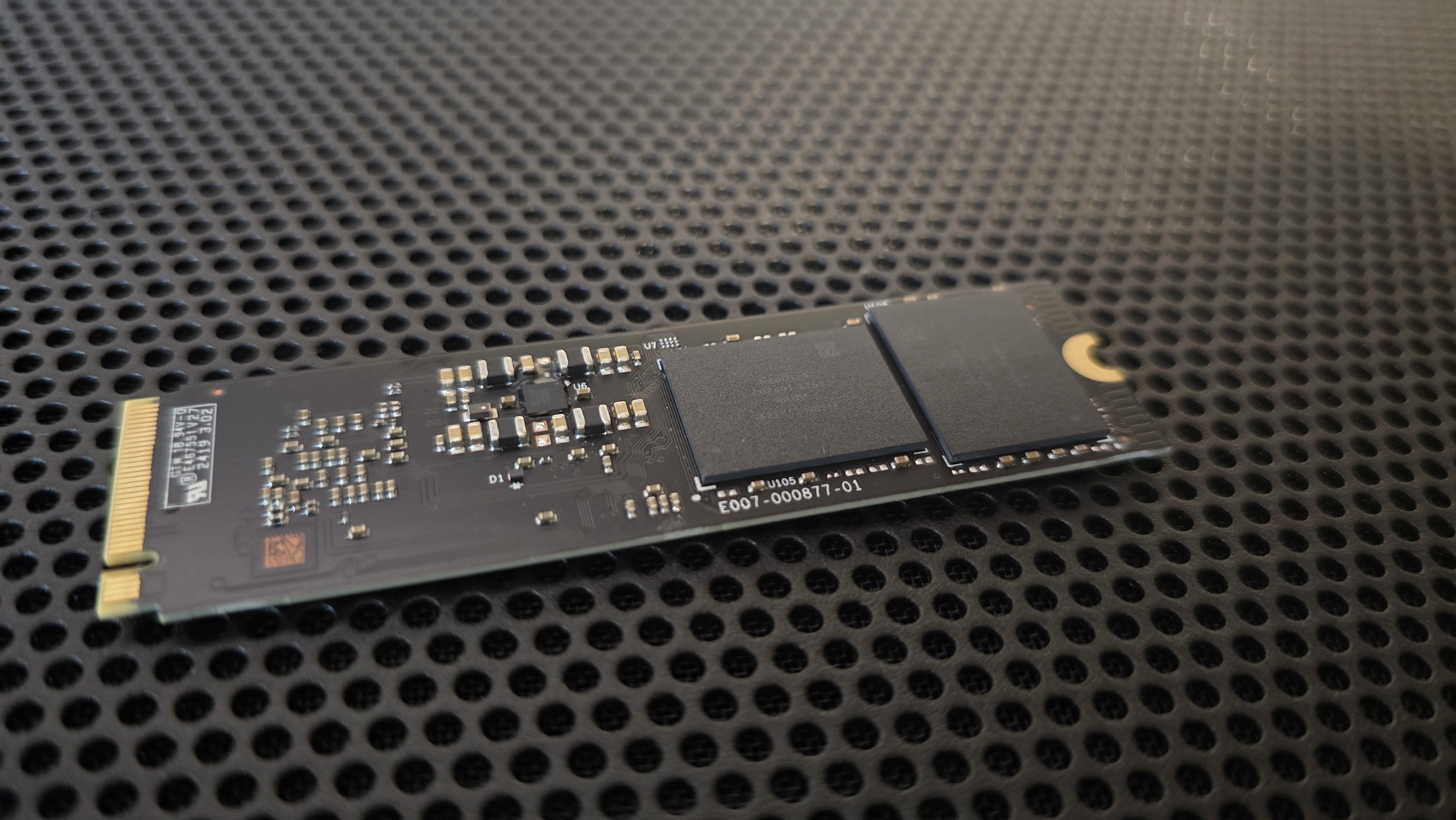


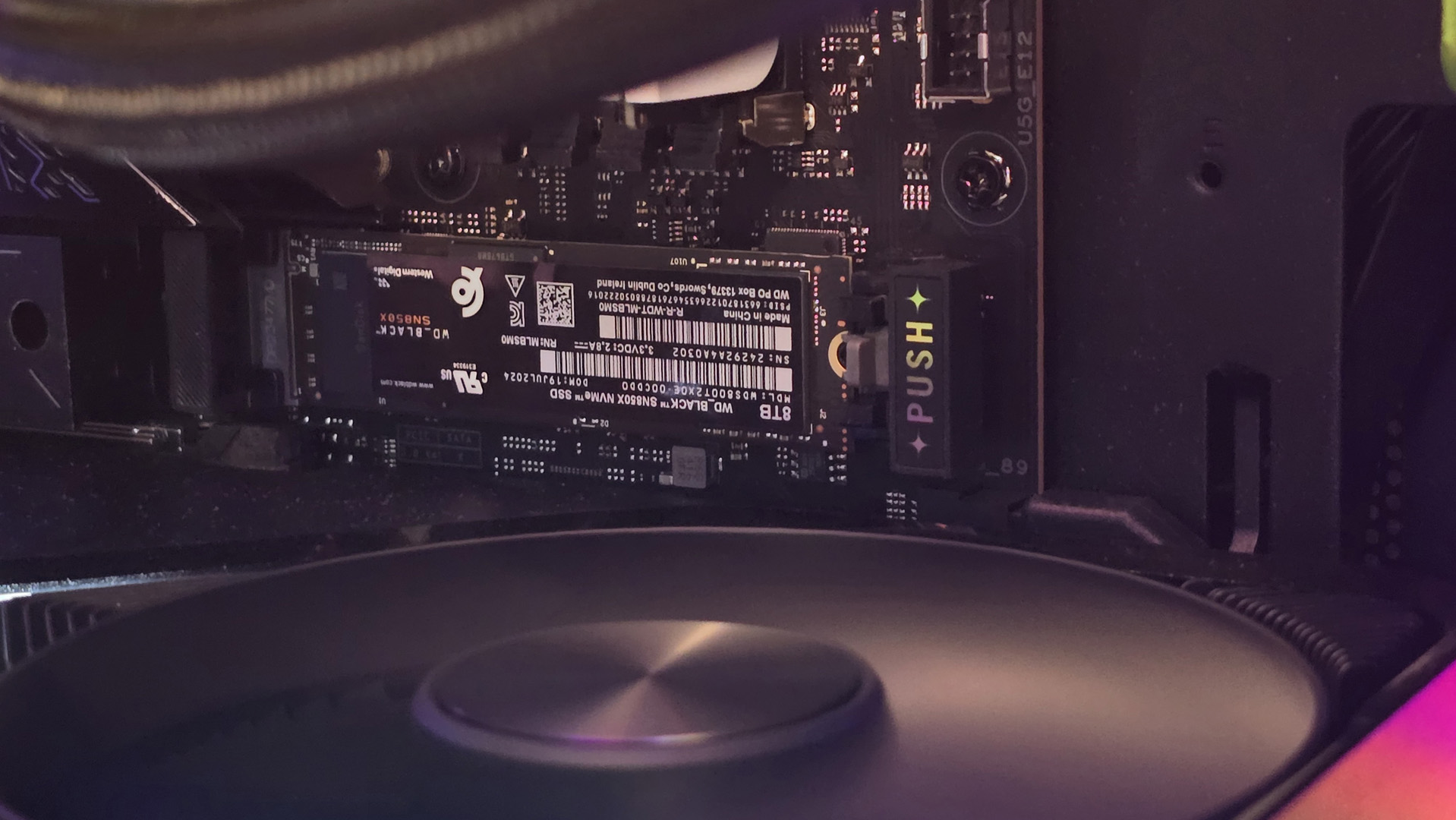
Specifications
Reasons to buy
Reasons to avoid
✅ You want a single drive with huge amounts of space: 8 TB NVMe drives are still a fairly niche product, but if you're dead set on a single stick with massive amounts of storage space this is the one to pick.
✅ You're looking to primarily use it as a fast storage drive: While the relatively slow 4K random read and write figures mean it's not the best as a full time gaming drive, it's seriously speedy for large file manipulation.
❌ You want to use it as your main gaming drive: Relatively slow 4K random read and write performance means it's not as well suited to gaming as other, smaller drives in this guide. It'll do fine, but one of the 4 TB or 2 TB drives on offer here will be better suited.
❌ You're on a budget: While it might be tempting to try and solve all your storage space woes in one fell swoop, you'll still be paying extra for one single 8 TB drive over two 4 TB models.
I wouldn't blame you for doing a double-take. Isn't this the same drive we recommend as the top SSD for gaming overall? Sort of. But many moons since its first release WD followed up with this ultra-huge version, and as a result the WD Black SN850X 8 TB has proved itself worthy of the best 8 TB SSD title overall.
There are a few questions you need to ask yourself before buying one of these monster drives, however. Number one, do you really want to drop this sort of cash?
The 8 TB version of the WD Black SN850X has an MSRP of $649, although I've seen it lower since its release as NVMe drive prices tend to fluctuate with the prevailing winds. Still, it's an astonishing amount of money for a single storage component, although you are of course getting a similarly astonishing amount of space for your money.
Still, two 4 TB drives (like the Team Group MP44 above) are usually cheaper. You'll have to really be dead set on a single 8 TB drive to look here—and there's always the redundancy angle to factor in, too.
The PC Gamer hardware team has used many, many WD SN850X drives over the years and they're remarkably reliable. But putting all your data eggs in one 8 TB basket means that, if it does give up the ghost, you've likely lost a huge amount of files in one single hit.
Ah, enough naysaying. If an 8 TB drive is truly what you desire the read and write speeds on offer here are excellent, putting in a turn of 7,100 MB/s and 6,590 MB/s respectively in our testing. What's not so hot are the random 4K numbers, meaning that this should probably be viewed more as a fast storage drive with gaming potential than a full-time, top-spec gaming drive.
Housing four NAND chips instead of the usual two seems to create a small amount of latency, and that's reflected in the 4K performance. It's still fast enough to game on, no doubt, but there are better SSDs for outright gaming.
Still, those of you who regularly handle huge amounts of large media files (I'm looking at you, video editors and photographers) might want a mighty 8 TB single drive, and this one's a corker for that very purpose.
There are caveats to a single 8 TB NVMe SSD, no doubt, but if you've got your heart set on one the WD Black SN850X 8 TB is the drive to go for. Just make sure it fits your use case before pulling the trigger, yes?
Read our full WD Black SN850X 8 TB NVMe SSD review.
The best 2230 SSD



Specifications
Reasons to buy
Reasons to avoid
✅ You're looking for a Steam Deck upgrade: With more capacity and way better performance, the Lexar Play 2230 is the perfect addition to any Deck.
✅ You want value for money: 2230-size SSDs tend to be quite a bit more expensive than 2280 ones, but this one is only a little extra. It's very reasonably priced.
❌ You want more than 1 TB: Until Lexar offers a bigger model, you're out of luck. Fortunately, 1TB is still a decent amount of storage.
Lexar is relatively new to the SSD scene but it has rapidly made a name for itself, by offering fast storage, with bags of capacity, and all with sensible prices. Its Play 2230 model is no exception and it's by far the best 2230 SSD we've had the pleasure of testing.
Underneath the label is 1 TB of Micron TLC NAND flash memory and a Silicon Motion SM2269XT controller. That's surprisingly decent stuff for a drive that's marketed at the handheld PC category, and they help the SSD's performance considerably. In our testing, we found that the claimed peak read/write figures of 5,400 and 4,700 MB/s were very accurate, so you're getting exactly what it says in the specs.
Better yet, the Lexar Play has a large pseudo-SLC cache—this is the portion of the flash memory that acts as a buffer for data, helping it maintain performance when writing lots of information. In a sustained write test, we measured the cache to be around 240 GB, which is pretty big for this type of SSD.
And the good news keeps on coming, as the Lexar Play doesn't get hot, even when pushed hard. With average operating temperatures around the 40°C mark and peaks of 53°C, your Steam Deck, Asus ROG Ally, or similar won't get any toastier just because you've installed a fast SSD.
There's only one downside to the Lexar Play: the capacity range on offer. 1 TB is currently the largest model on offer, and there's plenty of competition with larger capacities, such as our previous recommendation for Steam Decks, the Sabrent Rocket 2230. Relatively few retailers also seem to have it in stock, which makes it harder to pick one up for a good price.
Still, 1 TB is a decent enough amount of storage, and when it's this fast, cool, and affordable, you really can't complain.
Read our full Lexar Play 2230 1 TB SSD review.
The best SSD for PS5

Specifications
Reasons to buy
Reasons to avoid
Our favorite Silicon Power XS70 SSD config:
Silicon Power 2TB XS70 | 2 TB | 7100 MB/s read | 6600 MB/s write
The 2 TB model can be found at a very competitive price and works extremely well as an expansion drive for the PlayStation 5. With super fast read/write speeds and an attractive and great-performing heatsink, this little drive is deceptive in all the right ways.
✅ You're looking for the best drive for your PS5 : Several SSDs have been built to fit in a PlayStation 5, but this one stands out with its excellent thermals and speeds despite its small heatsink.
✅ If you want a set and forget solution: The Silicon Power XS70 is a no-fuss solution to a potentially fussy problem. It's an all-round great drive for the PS5 that fits in perfectly with no major caveats.
❌ You want included software for a PC install: The XS70 makes for an excellent PC SSD as well, but if you're looking for cloning software or indeed, any SSD software at all, you'll want to find a third-party solution.
Console gaming? On the PC Gamer website? Why absolutely. We're not total PC snobs here, we'll have you know, and even we enjoy the odd session on a PlayStation 5. The trouble is, the Gen 4 drive that's included as standard delivers good performance, but it isn't the fastest or the largest. So why not give it an SSD spruce up? Should that be your heart's desire, I can think of none better than the Silicon Power XS70 as my top pick for the best gaming SSD for the PS5.
With the release of the new PS5 Pro and its 2 TB SSD, you might be forgiven for feeling a little jealous looking at your old PS5 now, but sticking a new drive into your existing console is incredibly straightforward—and this Silicon Power SSD is a beaut.
Silicon Power is a brand that probably doesn’t get much attention compared to the likes of Samsung or WD, but when you look at its XS70 NVMe SSD with its high-end specifications, it's clear that the brand name isn't everything. Armed with the latest Phison controller and high-performance NAND flash memory, a drive like the Silicon Power XS70 has no problem competing with the best SSDs on the market.
The XS70 has a hardware combination that is common to many of the best SSDs, including the highly regarded Seagate FireCuda 530 and Kingston KC3000. That puts it in some fierce company, but I'm happy to report this little drive more than holds its own, with blazing fast read/write speeds of 7,300 MB/s and 6,800 MB/s respectively.
It's fully designed with PS5 compatibility in mind so the heatsink isn’t as bulky as some others you might come across. In fact, it looks more like a flash drive, but don't let that put you off. When it comes to loading up your favourite PS5 drives in double quick time, this little wonder has you covered.
It's a highly competitive gaming SSD with great performance, an attractive design and it offers good value for money. It's not perfect, in that it lacks its own software and hardware encryption, but whether you're a PS5 or PC gamer, that won't matter. Load it up with your game library, whether that's console or otherwise, and I reckon you'll absolutely love it.
Read our full Silicon Power 2 TB XS70 review.
The best SATA SSD

Specifications
Reasons to buy
Reasons to avoid
Our favorite Crucial MX500 config:
Crucial MX500 | 1 TB | 560 MB/s read | 510 MB/s write
It's not always possible to jam an NVMe SSD into your PC or laptop, and if that's the case then you need a great SATA drive. And the Crucial MX500 is most definitely that. With a full terabyte of storage and performance at the limit of the SATA interface, it's a quality drive.
The Crucial MX500 is the only SATA drive left on our list of the best SSDs for gaming, but it's still the best SATA SSD I can think of. When the price delta between PCIe and SATA is so small, if occasionally non-existent, it's difficult to make an argument for the far slower technology. But, as there is a hard limit on the number of M.2 slots on your motherboard, there is still a place for SATA SSDs as secondary storage.
And the Crucial MX500 is one of the best. With SATA's maximum theoretical bandwidth limit of 600 MB/s, it's nearly as quick as you'll get, and Crucial's drives have long been among the best-value options available too. This is the most affordable 1 or 2 TB SATA drive you can pick up and it makes a great second home for your Steam and Epic libraries.
It will happily function as a boot drive on systems with no M.2 sockets, or at least no bootable M.2 sockets anyway. You'll still be missing out on the zippy response of your operating system running on the SSD-specific NVMe protocol, but if that's not an option anyway, this drive will see you right.
SATA SSDs might be gradually going the way of the dinosaur, and Crucial has already discontinued the 250 GB and 4 TB MX500 models, but this drive still delivers good storage performance, in a form factor that still might have some go in it just yet.
Read our full Crucial MX500 review.
The best PCIe 5 SSD




Specifications
Reasons to buy
Reasons to avoid
✅ You want ludicrous speed from your storage: Going down the RAID route is expensive and complicated, but a single PCIe 5 SSD will be just as good.
❌ You're expecting great things from Gen 5: You'll barely notice the difference between this and a decent Gen 4 SSD in games and general use.
❌ You don't like heat: All Gen 5 drives get hot so you'll need to ensure you have a proper SSD cooler or a motherboard with good M.2 heatsinks.
It might seem odd to say this but I don't really recommend PCIe 5.0 (also known as Gen 5) SSDs at the moment. They're too expensive and too hot, and the performance capability is wasted in today's gaming PCs. But if you really must have one, then the best PCIe 5 SSD to get is this Team Group T-Force Z540.
The performance is rated for up to 12,400 MB/s and 11,800 MB/s for sequential read/writes for the 2 TB and 4 TB versions, whereas the 1 TB model is a little slower, with figures of 11,700 MB/s and 9,500 MB/s respectively. Those data speeds are roughly 70 to 90% higher than the best Gen 4 drives you'll find, so you'd expect the Z540 to turn your PC into an absolute beast.
Except it won't in games because no game is held back by a Gen 4 drive, even if it's an average one. It'll be a good while yet before anything shows notably faster loading or higher fps, just because you have a PCIe 5.0 SSD. And don't expect Windows to be significantly better, either.
Gen 5 SSDs only make sense for those users who need to read and write lots of data very rapidly (e.g. 8K video editing), and would normally use a RAID setup to get the required performance. Swapping a pair of drives for a single SSD has the potential to be more cost-effective, though the average price of most Gen 5 drives counters that whole idea.
But that's the best part of Team Group's Z540—the 1 TB drive is quite sensibly priced, though as you go up in capacity, the price tag rapidly increases. It's still a lot more expensive than a good Gen 4 SSD but that's par course for all PCIe 5.0 drives at the moment.
If that doesn't put you off and you have the right level of cooling required to stop the SSD from thermal throttling (either a dedicated heatsink and fan, or a motherboard with good M.2 heatsinks), then the T-Force Z540 is the sensible choice for a PCIe 5 SSD.
Read our full Team Group T-Force Z540 2 TB SSD review.
Also tested
Samsung 9100 Pro
For a first attempt at a Gen 5 SSD, Samsung has done a decent job with the 9100 Pro, with great sequential performance and power efficiency. However, the price is significantly higher than the competition, and there's little benefit to gaming with PCIe 5.0 drives.
PC Gamer score: 77%
Read our full Samsung 9100 Pro review.
WD Blue SN5000
Got a lot of games? Well this SSD definitely has room, and the load speeds you'd hope for. Unfortunately, that all comes at a premium price, alongside less than stellar thermal regulation.
PC Gamer score: 67%
Read our full WD Blue SN5000 review.
Corsair MP700 Elite
Boasting phenomenally cool performance for a PCIe 5.0 drive, plus impressive random 4K performance, you're left with one question: What's it doing down here and not up top? The bottom line is price, with other SSDs promising better performance for your money. A limited range of storage sizes—only 1 TB and 2TB currently—seal its fate.
PC Gamer score: 83%
Read our full Corsair MP700 Elite review.
Nextorage NEM-PA
This drive was our top recommendation for best high capacity SSD for a long time but it's very hard to find in stores and seems to have been replaced by the DRAM-less NEM-PAB version. If you can find one, then grab it while you can.
PC Gamer score: 90%
Read our full Nextorage NEM-PA review.
Samsung 990 Evo Plus
There's plenty to like about the Samsung, not least that it comes from one of the most respected names in the industry. Still, while the sequential performance is great, the random 4K numbers are less so, and there's still that issue with price.
PC Gamer score: 74%
Read our full Samsung 990 Evo Plus review.
Crucial P310
It's a decent enough storage upgrade for your handheld gaming PC, but there are faster drives out there and it gets hot when worked hard for a while.
PC Gamer score: 79%
Read our full Crucial P310 review.
WD Black SN770M
If you want to give your handheld gaming PC a decent boost in storage capacity and performance, then the SN770M is seriously worth considering. Prices vary a lot, though, and it gets quite toasty when being worked hard.
PC Gamer score: 85%
Read our full WD Black SN770M review.
Seagate FireCuda 540
As PCIe 5.0 drives go, this is a very fast performer. That being said, there's still not much real-world reason to buy one over a good PCIe 4.0 drives, so we still recommend you save your money on one of the SSDs above.
PC Gamer score: 72%
Read our full Seagate FireCuda 540 review.
Crucial P3 Plus 2 TB
You get a lot of capacity for your money here, but SLC cache worries and a slightly skewed price/performance metric makes this a tough drive to recommend over the competition.
PC Gamer score: 70%
Read our full Crucial P3 Plus 2 TB review.
WD Black SN770
A very solid and speedy NVMe drive, this, but the WD Black SN850X does it better—for roughly the same money. Still, if you can find a good deal on one it's a great pick, although it does run hot.
PC Gamer score: 87%
Read our full WD Black SN770 1 TB review.
Samsung 990 Pro 2 TB
Samsung are a go-to name in the world of storage, and the 990 Pro is certainly a performer. But when you can get similar performance for less, there's not a whole lot of reason to opt for this drive, despite its impressive numbers.
PC Gamer score: 87%
Read our full Samsung 990 Pro 2 TB review.
Kioxia Exceria Pro 2 TB
It was well-priced on launch, this Gen 4 SSD, but the performance is off the pace. Plus, while SSD drives aren't as cheap as they used to be, you can still find better deals.
PC Gamer score: 71%
Read our full Kioxia Exceria Pro 2 TB review.
How we test SSDs
We put every SSD we get in the PC Gamer labs through their paces in various benchmarks made up of a mix of synthetic tests and real-world applications. To ascertain a drives sequential throughput, we use ATTO SSD Benchmark for compressible data (a best-case scenario) and AS SSD for incompressible data (more realistic). We also test random throughput with AS SSD and a combination of CrystalDiskMark 7.0 and Anvil Pro.
When it comes to the real-world tests, we time how long it takes to copy a 30 GB game install across the drive and use PCMark10 and Final Fantasy XIV: Shadowbringers, which includes a level load test.
We also check operating temperatures to ensure that the drive isn't getting too hot and throttling. That's becoming more of an issue with faster and faster drives. PCIe 5.0 drives appear to require a lot more cooling than previous generations, which does make you wonder if the extra speed is really worth it yet.
Where to buy the best SSDs

Where are the best gaming SSD deals?
In the US:
Amazon - Up to 50% off internal and external SSDs
Walmart - Deals on internal and external SSDs
B&H Photo - Save up to $50 on NVMe SSDs
Best Buy - Great prices on Samsung SSDs
Staples - Save up to 30% on a range of SSDs, USB sticks, and external SSDs
Newegg - Plenty of NVMe SSDs
In the UK:
Amazon UK - Save on HDDs, SDDs, and external drives
Scan - SATA drives as low as £21
Ebuyer - 500GB SSDs starting from £34.98
Overclockers - Save up to £51 on Samsung SSDs
Currys - Save £32.00 on WD Black SN750
Laptops Direct - Save on SSDs for your laptop
SSD FAQ
What's the difference between SATA and NVMe PCIe-based SSDs?
As the prices of NVMe SSDs fall every day, we don't see much difference in cost between the best NVMe SSDs and their SATA-based equivalents. When the cheapest 2.5-inch 1 TB SATA SSD is only $24 less than an equivalent capacity NVMe PCIe drive (and four times slower), why bother with older SATA technology when you can move into the future for so cheap?
Where SATA's theoretical performance limit is 600 MB/s, and PCIe 3.0's is 4,000 MB/s, PCIe 4.0 SSDs can double that figure to a maximum of 8,000 MB/s. The current top speed of available Gen4 drives is around 7,000 MB/s, which is double that of the previous generation.
PCIe 5.0 SSDs can exceed 10,000 MB/s and onwards up to their theoretical limit around 16,000 MB/s. But for now, they run hot and they're very expensive, so we're not really recommending them just yet.
Can I fit an NVMe SSD on my motherboard?
The M.2 socket has been included on motherboards of all kinds for many years now, so the chances are that there's a spare slot sitting inside your existing gaming PC. Check out your motherboard's specs page online before pulling the trigger on an NVMe SSD purchase, though, to be sure. Those harboring a board that's a few years old now, do yourself a favor and make sure it supports booting from an NVMe drive first. Not all older motherboards do, especially if you're going back multiple CPU generations (maybe a full upgrade is due, if so).
If you don't have any NVMe slots, you can buy expansion add-in cards that will offer one or more NVMe slots in exchange for one of your PCIe slots on your motherboard, just be aware that these are at an added cost and take up precious room.
Can you put a PCIe 4.0 SSD in a 3.0 slot?
Yes, you can. They M.2 socket is identical between the two generations of interface and so a PCIe 4.0 SSD will fit comfortably inside a PCIe 3.0 slot. They will also function perfectly well too, except the Gen4 drive will be limited by the speed of the older interface.
The same goes for PCIe 4.0 and PCIe 5.0 drives. You're just wasting the potential of the higher-speed drive by dropping it into a slower slot, is all, but it will work.
What PCIe generation should I look for?
Right now, PCIe 4.0 is the go-to PCIe generation. That's because it offers a high speed at a reasonable cost. The newest gaming SSDs on the market offer PCIe 5.0 capability, which doubles the theoretical bandwidth an SSD can run at. However, these are few and far between and awfully expensive. Also, the first drives of any PCIe generation tend to end up much slower than what that generation is truly capable of.
Here are the rough speeds (multiply by 1,000 to get MB/s) for each PCIe generation over x4 lanes:
PCIe 1.0 / Gen1: 1 GB/s
PCIe 2.0 / Gen2: 2 GB/s
PCIe 3.0 / Gen3: 4 GB/s
PCIe 4.0 / Gen4: 8 GB/s
PCIe 5.0 / Gen5: 16 GB/s
How big a gaming SSD should I buy?
The easy answer is: as big as you can afford. With SSDs, the higher capacity, often the quicker they are. That's because you end up with more memory dies plumbed into a multi-channel memory controller, and that extra parallelism leads to higher performance.
We would traditionally say that an entry-level SSD should be 1 TB in order to pack in your operating system, for slick general system speed, and your most regularly played games. But such is the increasing size of modern games that a 2 TB SSD is increasingly looking like the minimum recommendation, and a 4 TB drive or above will really give you some proper breathing room for lots of big game installs.
The biggest gaming news, reviews and hardware deals
Keep up to date with the most important stories and the best deals, as picked by the PC Gamer team.

Jeremy has been writing about technology and PCs since the 90nm Netburst era (Google it!) and enjoys nothing more than a serious dissertation on the finer points of monitor input lag and overshoot followed by a forensic examination of advanced lithography. Or maybe he just likes machines that go “ping!” He also has a thing for tennis and cars.
- Katie WickensHardware Writer
- Jacob RidleyManaging Editor, Hardware
- Chris SzewczykHardware Writer
- Alan Dexter




